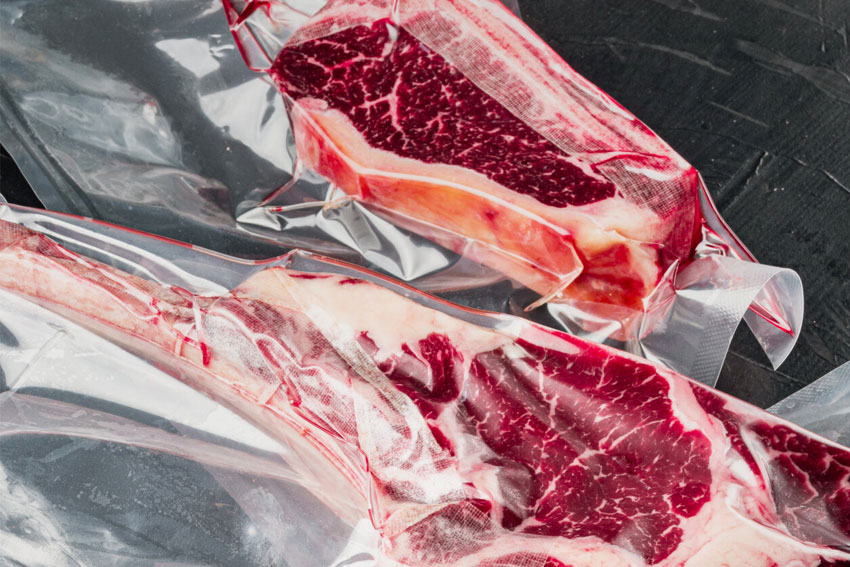
Selecting a Commercial Dry Aging Cabinet: 3 Essential Considerations
A kilogram of fresh Aussie beef costs on average about $8.58, while a beautifully matured kilogram of dry aged sirloin costs $72.82.
A considerable difference in price, but even more so in profit.
Why the massive difference, you may ask?
The answer is in the dry aging process!
Commercial dry aging cabinets don’t come cheap, so before you put out to buy your commercial food preparation equipment, you need to take into account these three essential considerations.
The difference between making 8 dollars or 70 dollars is your choice of dry aging cabinet, so make sure you choose wisely.
What is Dry Aging?
Dry aging beef is a widespread method implemented to better two important profiles of the meat: flavour and juiciness. As gross as it may seem, the affair of aging beef is basically a decomposition procedure that is meticulously controlled so that the beef does not go bad.
Dry aging is the highly satisfying procedure of putting an unwrapped, wholesale joint of prime beef in a chilled cabinet for a length of time while carefully monitoring temperature, relative humidity, and air flow to increase juiciness and flavour.
We’re left with a perfectly matured, juicy chunk of beef with the most exquisite flavour profile. It’s not an easy task; it takes careful work and the best equipment to get it right.
While dry aging provides a specific flavour that no other maturation process can mimic, it causes a decrease in overall weight from shrinkage and trimming.
The flavour profile is produced by different moulds and yeasts that are going to come into contact with the meat and start growing on it. Moulds like Penicillium nalgiovense and Penicillium roqueforti are almost definitely going to grow.
Dry aging needs meticulous control over temperatures as freezing will halt all bacterial growth, On the other hand, hot temperatures cause the meat to rot. Humidity and air flow are vital factors as well to get an even dispersal of moisture out of the meat.
Precision Temperature Control in the Dry Aging Cabinet
Temperature is one of the most critical aspects of commercial meat preparation, particularly when it comes down to dry aging.
In a study published in the Journal of Animal Science and Technology, researchers confirmed that the optimal temperature for dry aging beef is between 0° and 4 °C (32–39.2 °F).
Precise temperature control is essential to dry aging due to the fact that if the storage temperature is too high, the enzyme processes that promote aging will work well and improve flavour.
But elevated temperatures will increase bacterial growth, causing bad odours and resulting in more of the end product having to be cut away and wasted.
Therefore, aging is done at as low a temperature as possible while avoiding the meat freezing.
The key is to balance the enzymatic processes with meat quality, so over a more extended period, say 28 days, your ideal temperature would be 0.5 °C, give or take a degree.
Maintaining this precise temperature 24/7 takes high quality food preparation equipment, just like the ones we supply, guaranteed to keep your beef at a steady temperature until it meets your exacting standards.
Humidity in Dry Aging
Yet another critically important aspect of dry aging is that of relative humidity.
If the humidity is too high, bacteria can grow, causing, once again, foul odours and flavours.
If the humidity is too low bacterial development will be restricted, but the beef will dry out too quickly, causing it to have less juiciness than what you want in a prime dry-aged steak.
The spectrum of humidity is quite broad, ranging from 61% to 85%, according to who you ask.
The studies on relative humidity for a meat curing cabinet have used a level of about 80%, with Campbell et al. dry aging their beef at 75 % relative humidity and Warren and Kastner using a variable humidity of 78 ± 3 %.
The thing here is that if you have ever lived in a wet place, or a dry place for that matter, you know that the humidity can drop from 80% to 40%, or vice versa, in mere hours and for perfectly dry-aged beef, that is a big no-no.
This dry aging cabinet will ensure that your beef is cured to perfection, with no ifs or buts.
Dry Aging and Air Flow
Temperature and humidity are so essential but are not the be-all and end-all of dry aging. Without proper air flow, the rest does not matter.
There needs to be proper air flow to provide air distribution with no dead zones or areas of high intensity wind.
If there is not enough airflow, the beef will stay wet, but if there is too much air, the meat will dry out too fast and once again, you will have to trim off a lot at the end, wasting your meat.
For international markets, the Meat Export Federation of USA guidelines for dry aged beef recommends an air flow of 0.5–2 m/s (1.6–6.6 ft/s) for dry aging.
The air must be kept even for the whole duration of the dry aging process. The airflow can be controlled with a meticulously designed refrigeration unit, just like the ones that we provide.
The Bottom Line in Age Drying
All said and done, we know our parameters for the perfect dry aged beef, but maintaining them is a different story.
You need top-of-the range commercial food preparation equipment to achieve constant temperatures of 0 °C to 4 °C, relative humidity of 75 to 80 % and air flow of 0.5 to 2 m/s.
A sure-fire way to hit your mark and produce perfectly matured dry aged beef is to use one of our dry aging cabinets because nothing short of perfection will do. Contact us today.
